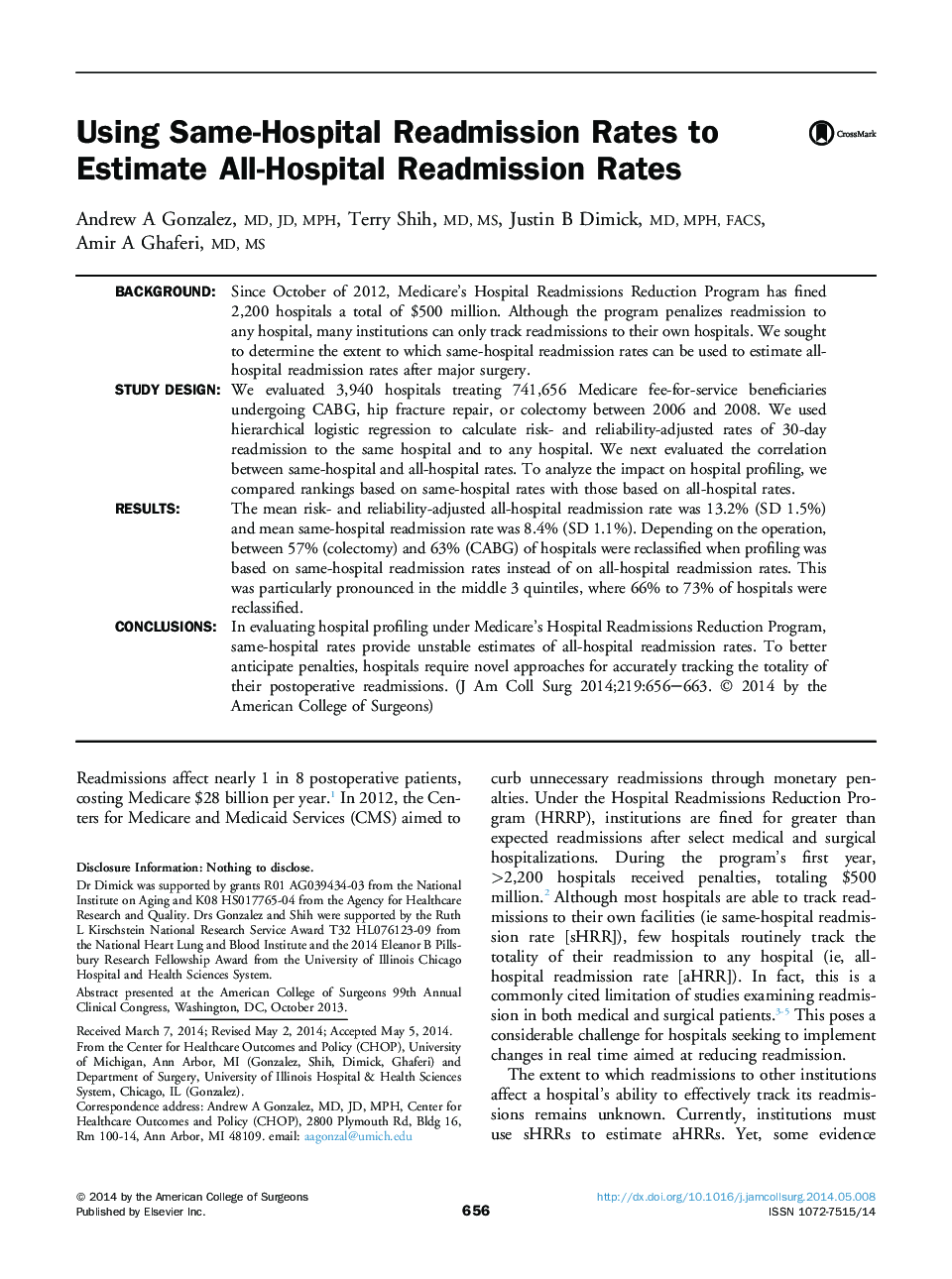| Article ID | Journal | Published Year | Pages | File Type |
|---|---|---|---|---|
| 4291482 | Journal of the American College of Surgeons | 2014 | 8 Pages |
BackgroundSince October of 2012, Medicare's Hospital Readmissions Reduction Program has fined 2,200 hospitals a total of $500 million. Although the program penalizes readmission to any hospital, many institutions can only track readmissions to their own hospitals. We sought to determine the extent to which same-hospital readmission rates can be used to estimate all-hospital readmission rates after major surgery.Study DesignWe evaluated 3,940 hospitals treating 741,656 Medicare fee-for-service beneficiaries undergoing CABG, hip fracture repair, or colectomy between 2006 and 2008. We used hierarchical logistic regression to calculate risk- and reliability-adjusted rates of 30-day readmission to the same hospital and to any hospital. We next evaluated the correlation between same-hospital and all-hospital rates. To analyze the impact on hospital profiling, we compared rankings based on same-hospital rates with those based on all-hospital rates.ResultsThe mean risk- and reliability-adjusted all-hospital readmission rate was 13.2% (SD 1.5%) and mean same-hospital readmission rate was 8.4% (SD 1.1%). Depending on the operation, between 57% (colectomy) and 63% (CABG) of hospitals were reclassified when profiling was based on same-hospital readmission rates instead of on all-hospital readmission rates. This was particularly pronounced in the middle 3 quintiles, where 66% to 73% of hospitals were reclassified.ConclusionsIn evaluating hospital profiling under Medicare's Hospital Readmissions Reduction Program, same-hospital rates provide unstable estimates of all-hospital readmission rates. To better anticipate penalties, hospitals require novel approaches for accurately tracking the totality of their postoperative readmissions.
